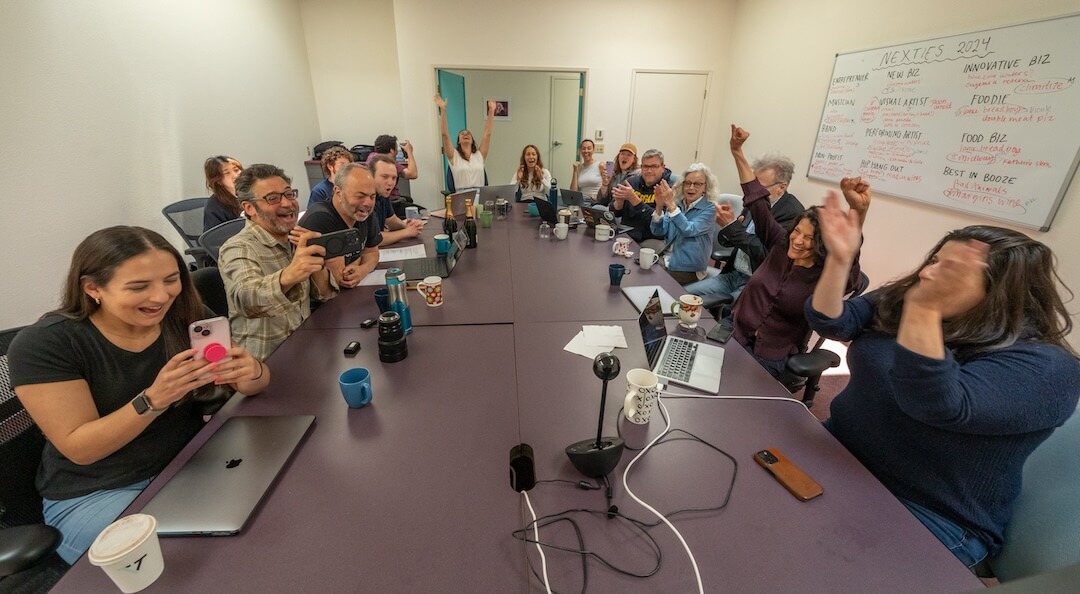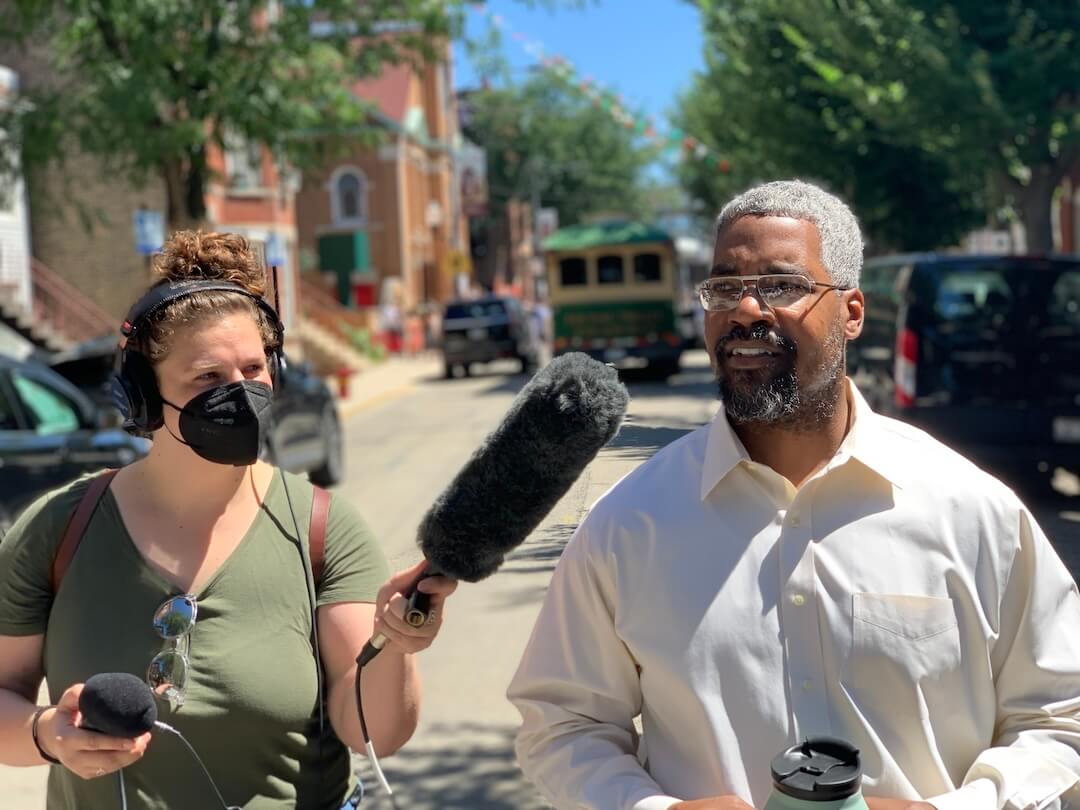There’s a very human tendency to overprepare for the challenges that await us, only to realize later on that some of that overpreparation may have been weighing us down.
If you’ve ever prepped for a long hike, you probably packed at least a few things that you never once touched. You may have even dumped it somewhere along the way — in a nature-friendly way, of course — to spare you from having to carry it. (I’ve never done this before and I’m almost certainly confusing Cheryl Strayed’s “Wild” with personal memory).
This pandemic and its insidious way of shortening days but lengthening work hours has similarly forced me to cast off many journalism tools I once thought I would need. As weeks turned to months and months turned to a year, I left so many “nice-to-haves” and “someday-I’ll-uses” strewn across the digital world and cast out of my mind.
My resulting toolkit is lean, mean and utilitarian. I’ll share a few of the survivors below, minus the ones you know and maybe even loathe at this point (Slack and Zoom, I’m looking at you).
Four pertinent pandemic tools
Knowing what our audience needed to know was imperative in the nascent days of the pandemic. By keeping an eye on Google Trends, Al Tompkins (who launched the Covering COVID-19 newsletter just before the pandemic became official) was able to know and provide guidance for the big questions that people had about the virus.
That gave us a “what,” but didn’t answer some of our questions about who, where and when. Parse.ly Currents held some of that information, including the topics that people in various locations were most interested in and when they were reading the news (the latter has shifted a lot in the last year). Ultimately, since Poynter’s audience isn’t location-specific, much of it wasn’t terribly useful for us, but it was interesting to watch the shift.
With so much going on, I didn’t have much time to browse for news like I usually would, so I came to rely on Nuzzel as a quick catch-up. The tool shows you the top news stories among the people you follow on Facebook and Twitter. By switching between my Twitter account (local and more personalized to my interests) and Poynter’s Twitter account (which mainly follows media industry people), I was able to get a pretty good bead on what had happened while I was away from the news.
Our audience has grown in the past year or so, and so has the volume of spam our site has received (if I had a dollar for every Russian-language comment about cryptocurrency, I might actually have enough to afford one Bitcoin). That meant I sometimes missed a useful comment and, worst of all, a request for a correction or clarification. VettNews has helped us manage the latter. A simple but unmissable “Request a correction” button that now appears at the bottom of our articles guides readers through a short set of questions that helps us get it right. Requests pop up in a special Slack channel that I won’t miss (they can go to email, too). Do folks still abuse it? Sure. But it’s easy to remove or ignore offenders, and the VettNews team is responsive to feedback.
But look, I’m not just a worker, and neither are you, so a few more things …
On the more personal front
You tend to notice a lot more about your neighborhood when you’re sitting at home all day. Mine has a bird that sounds like a ’90s car alarm! I have, unfortunately, also noticed a lot more first responder sirens, and have been able to track what they’re doing in my neighborhood — medical emergencies, fires, car accidents — through my county’s website. Your city or county website might offer the same. Use it to find issues you need to cover or just to build empathy for your neighbors.
Two newsletters not related to the pandemic have become instant-opens for me over the past year.
The Objective, which aims to hold journalism accountable (and, in my opinion, succeeds) is one of them. On their About page, The Objective says that they “firmly believe in the power of journalism” and also: “We also believe in its ability to change for the better, to cover marginalized communities more deeply and to make newsrooms more open to people from those communities.” Seriously, subscribe now.
The other is Garbage Day, from Ryan Broderick. The newsletter bills itself as “about having fun online” but it’s so much more than that. Broderick often digs deep into internet subcultures to explain why they are the way they are and how they have come to influence our IRL lives. You’ll probably best connect with it if terms like “Kazaa,” “Hawthorne Heights” and “My Immortal” mean something to you, but it’ll also be helpful if you’re the type of person who wonders why Lola Bunny is suddenly all over Twitter — when you’re Quite Online but not Extremely Online.
And a new one: The Collective, from my colleagues Doris Truong and Samantha Ragland. It’s a monthly newsletter for journalists of color by journalists of color. It launches late next month. Get in early.
On the extremely personal front, wow did I pack on some pounds there at the start of the pandemic. But in November, I bought an Apple Watch and have “closed my rings” every day and burned a lot of it off. After scoffing at Apple Watches for years for being unnecessary, annoying to charge (still true) and environmentally unfriendly (why I’ll never buy EarPods), I gave in and I’m glad I did.
SPONSORED POST
Turn your audience into a business with Ghost
Independent journalists and content creators are generating over $2M per year using this open source, customizable publishing platform. Launch a new blog, newsletter and membership site with 0% fees — no code required.
A few closing thoughts
This is a newsletter about digital tools, but as a new manager I’ve found the best “tools” during this pandemic have been understanding, empathy and patience. We’re all dealing with a lot, and some of us are dealing with even more than we might realize. The people should come before the work.
Back onto digital tools: Keep an eye on TweetDeck, which remains the best free tool for scheduling tweets. The Twitter-owned tool is apparently getting a big overhaul. I’m hoping they fix the bug that often forces me to refresh to see scheduled tweets and leave most of the rest intact.
Your workplace might have forced you to use a VPN — or virtual private network — when you started working from home. You might find it incredibly annoying. But if things start to clear up, it’s a smart idea to keep one around. Especially when you’re using public Wi-Fi networks. The one I had been using seems to have fallen from grace, but Wirecutter suggests Mullvad.
I’m not on Clubhouse because it sounds like a Jeff VanderMeer-level nightmarescape to me. But I probably should have signed up and snagged my username, just in case. There might still be time for you!
Lastly, everyone has been sharing this tool to purposefully distort your Zoom audio to make it seem like you’re dropping the call. To quote my friend Ernest Hooper, “That’s all I’m saying.”
This article originally appeared in Try This! — Tools for Journalism, our newsletter about digital tools. Want bite-sized news, tutorials and ideas about the best digital tools for journalism in your inbox? Sign up here. Try This! is supported by the American Press Institute and the John S. and James L. Knight Foundation.







